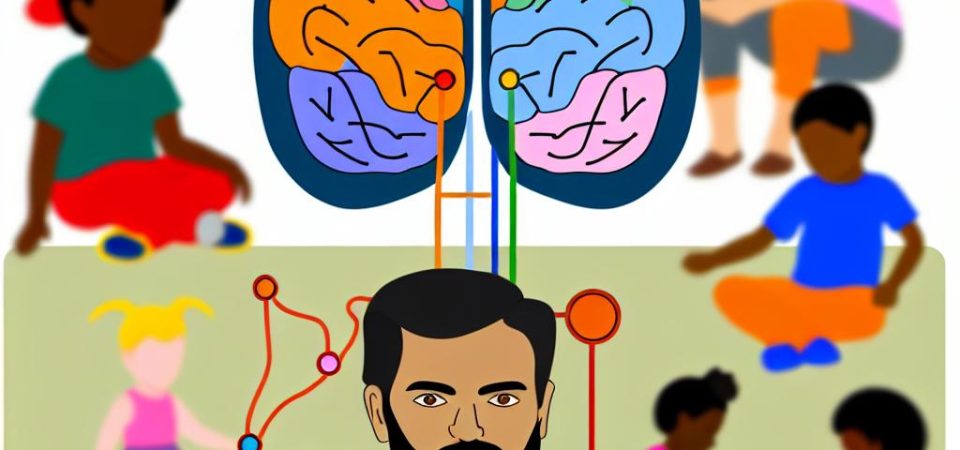Understanding Autism and Sensory Processing Disorder
Autism Spectrum Disorder (ASD) and Sensory Processing Disorder (SPD) are frequently examined together, both in academic discourse and in everyday observations. This connection is largely due to the high incidence of sensory processing challenges observed in individuals diagnosed with autism. By delving into the nuances and relationship between these two conditions, we can better comprehend their shared characteristics and the ways they affect individuals.
Defining Autism Spectrum Disorder
Autism Spectrum Disorder is a multifaceted neurodevelopmental condition distinguished by difficulties in social communication and interaction, alongside a restricted and repetitive pattern of behavior, interests, or activities. The term “spectrum” reflects the wide variability in symptoms and severity among affected individuals. Because of this variability, ASD has a unique impact on each person’s life, necessitating customized support and intervention strategies.
ASD manifests across a broad scope of behaviors and developmental difficulties. Some individuals may find social communication and forming relationships particularly challenging, experiencing difficulty in understanding social cues and norms, which can make interactions stressful or confusing. Others may exhibit intense focus on specific interests or repetitive behaviors, such as stacking objects or following strict routines. These characteristics emphasize the complexity of ASD and underscore the need for tailored intervention strategies.
Characteristics of Sensory Processing Disorder
Sensory Processing Disorder refers to atypical processing of sensory input by the nervous system. This can involve unusual responses to sensory stimuli, which may include hypersensitivity, where individuals are overly sensitive to sensory inputs, or hyposensitivity, where individuals are under-responsive. SPD influences how people experience sensory stimuli, including sounds, textures, tastes, and movements.
For example, a person with hypersensitivity might find everyday noises like a vacuum cleaner too loud or disturbing, while someone with hyposensitivity might not notice extreme temperatures or may seek out additional sensory input, like swinging or spinning, to feel regulated. Understanding these sensory processing nuances is crucial in designing effective interventions for those diagnosed with SPD.
The Connection Between ASD and SPD
Current research outlines that a substantial percentage of individuals with ASD also experience sensory processing difficulties. Studies have identified that between 45% and 96% of people with autism show symptoms associated with sensory processing issues. These sensory processing challenges might manifest in several forms, such as an aversion to loud sounds, discomfort from certain textures, or a strong compulsion for physical movement.
The significant overlap between ASD and SPD signifies the necessity of considering sensory processing aspects when diagnosing and supporting individuals with autism. Addressing these sensory challenges can significantly enhance daily functioning and improve the quality of life for those affected by ASD, making it a pivotal area of focus for therapists and caregivers.
Approaches to Support
Interventions for individuals managing both ASD and SPD are often centered around sensory integration therapy. This therapy aims to aid individuals in responding more adaptively and functionally to sensory input. Occupational therapists typically guide sensory integration therapy, devising activity plans specifically tailored to each individual’s sensory profile.
In addition to therapeutic interventions, constructing sensory-friendly environments is invaluable. Such environments are adapted to minimize exposure to overwhelming sensory stimuli while offering calming alternatives. Elements like noise-canceling headphones, weighted blankets, and tactile fidgets are examples of tools that can help those with ASD and SPD manage their sensory experiences more effectively. These approaches not only aid in reducing stress but can also facilitate improved engagement in daily activities and social interactions.
An adaptable environment plays a crucial role in reducing sensory overload and fostering a sense of safety and comfort. Designing classrooms, homes, and public spaces with sensory considerations in mind can make a marked difference in the experiences of those with sensory processing challenges.
Conclusion
The relationship between Autism Spectrum Disorder and Sensory Processing Disorder is an important field of study that contributes to better understanding and supporting individuals with autism. By acknowledging and addressing sensory processing challenges, more effective interventions can be developed, promoting better life outcomes for those impacted by these conditions. Through targeted therapies, environment adaptation, and a deep understanding of the unique experiences of each individual, we can strive towards a more inclusive and supportive approach to autism care and support.

